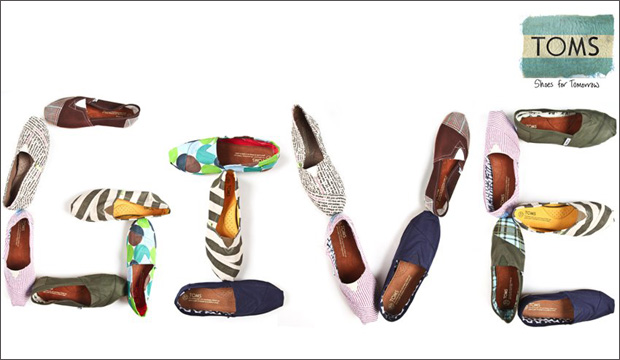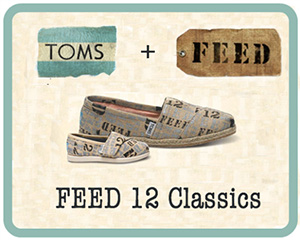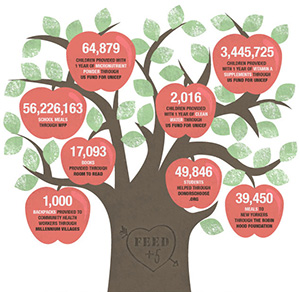
 Tom’s Shoes and FEED Projects are under scrutiny.
Tom’s Shoes and FEED Projects are under scrutiny.
Not necessarily their particular businesses but for their business model. There is a lot of debate over the effectiveness of the charitable one for one business model, especially as it applies to fashion.
Many people will argue that small businesses such as FEED Projects and TOMS don’t actually have any real impact on the world because they’re not promoting any sort of change. They are instead acting as a band aid for issues that require far more attention they these businesses can offer.
Businesses like FEED Projects, who give 25 meals to one child in need might not be changing the entire world, but they sure are empowering those children to strive for something better.
Their point is shouldn’t companies who want to do good be focusing on ways of empowering the local people and business, rather than handing out items that people may or may not actually need; products, they, that have not even been made by businesses in that country?
In my opinion, it’s plain and simple; we all want to give back and feel good about what we are buying. I mean hey, if the purchase of that purse I want will help to give water to under privileged families then why wouldn’t I buy it, over the one that doesn’t?
Since the beginning, I’ve always been a fan of the, “One for One” motto which more and more businesses seem to be incorporating into their business model and philosophy.
With that said, however, I understand where the naysayers are coming from.
With the hundreds, if not thousands, of “charitable” businesses out there today, how do we know if they are actually doing what they saying they’re doing? Furthermore, how do we know that even if they are, it’s actually making an impact?
In order for this model to work, transparency is absolutely key.
It is imperative that charitable businesses are willing to show everything and anything to consumers.
TOMS addresses this by allowing consumers to get involved with their Shoe Drop and gives consumers the opportunity to check out videos of the many Shoe Drops that have taken place.
FEED Projects shows a variety of stats, pictures and videos on their site allowing consumers to see that their money is going where they say it is.
If a company isn’t transparent then it becomes difficult to see what change the business is really putting into place. Examples like TOMS and FEED Projects are just two of the many charitable businesses out there with this model.

